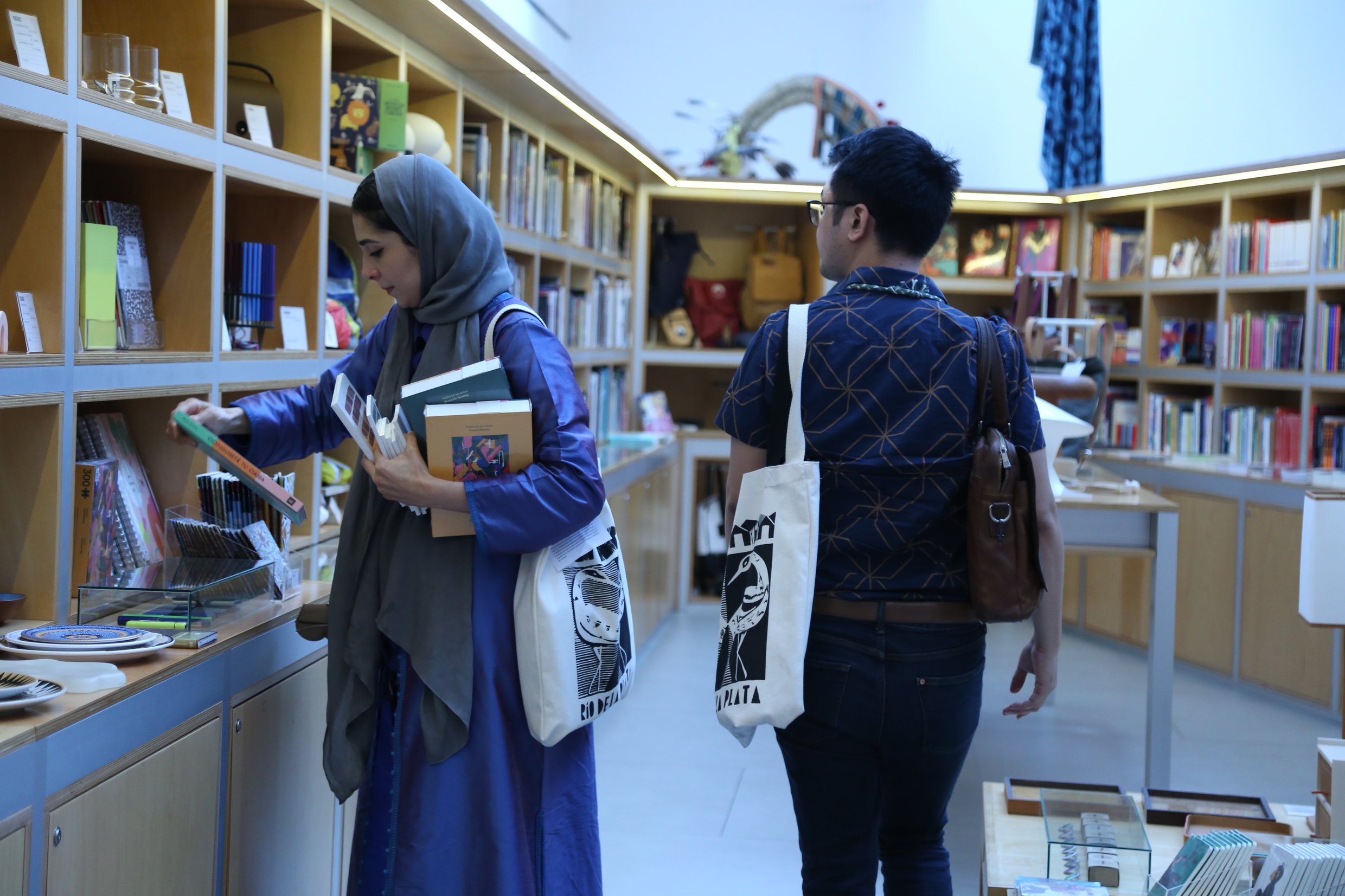(6) Reading List

(6) Reading List
The papers and books listed below have been recommended for being powerful sources of inspiration.
eco-operations, Edited by Fabienne Liptay and Liliana Gómez, published by Diaphanes, October 2024.
The Sustainable Museum. How Museums Contribute to the Great Transformation. Book by Christopher J. Garthe, published by Routledge on November 2022
Building culturally sustainable communities. Community museums and transmedia storytelling. Paper published by Yi Song, Filippo Gilardi, and Celia Lam, 11 May 2023 on Museum Management and Curatorship at Taylor and Francis Online.
How sustainable are cultural organizations? A global benchmark: Paper by Martin Müller and Julie Grieshaber, published on Tand Online,26 Feb 2024. Museums, theaters, and other cultural organizations can be important actors in the sustainability transition, enjoying high visibility and public trust.
Creating sustainable exhibitions at the Design Museum: Article published at Blooloop on 8th February 2024 by Lalla Merlin on how the museum is measuring its carbon impact and changing the way the sector thinks about temporary exhibits.
Museums and the Climate Crisis, book edited by Nick Merriman, Taylor & Francis, Dec 22, 2023, shows how museums can respond to the interrelated global climate, biodiversity and pollution crises.
How can museums support better futures? Churchill Fellowship findings, for COP28. November 2023. This report, authored by Henry McGhie from Curating Tomorrow, addresses the inadequacy of global action for climate change, human rights, and environmental challenges, including pollution and biodiversity loss.
The museum environment in an era of sustainability (video recording). Talk by Dr David Saunders, a leading conservation scientist with extensive experience working in large museums in the UK, spoke about the era of sustainability and its impact on the museum environment.
Degrowth and Progress. Texts by Sara Buraya Boned, Cristina Cámara, Marta Echaves, Silvia Federici, Ida Hiršenfelder, Vladan Joler, Vincent Liegey, Monica Narula, Nataša Petrešin-Bachelez, Corina Oprea, Paula Pin Lage, Ajda Pistotnik. Presenting works by: Rosa Barba, nora chipaumire and Ari Marcopoulos, Vladan Joler, Staš Kleindienst, Elizabeth LaPensée, Paula Pin Lage, Raqs Media Collective, Maja Smrekar, Andrés Tena (2021).
Plasticity of the Planet: On Environmental Challenge for Art and Its Institutions. Texts by Defne Ayas, Viviana Checchia, Grzegorz Czemiel, Daniel Falb, Cathy Fitzgerald, Mira Gakjina, Alexander Hope, Anne Szefer Karlsen, Jarosław Lubiak, Małgorzata Ludwisiak, Ewa Majewska, Catharine Malabou, Nataša Petrešin-Bachelez, Małgorzata Sugiera, and Magdalena Ziółkowska (2019).
Resource Hungry. Our Cultured Landscape and its Ecological Impact. Texts by Jennifer Allora & Guillermo Calzadilla, Stuart Bannocks, Andrea Bowers, Elvira Dyangani Ose, Professor Roberto Feo & Rosario Hurtado, Dominique Gonzalez- Foerster, Dorothea von Hantelmann, Joan Jonas, Stefan Kaegi, Jessica Morgan, Philippe Rahm, Lucy Raven Anneliek Sijbrandij et al. Edited by Jessica Morgan and Dorothea von Hantelmann (2020).
Life Cycle Assessments of Loans and Exhibitions: Three Case Studies at the Museum Fine Arts, Boston. Texts by Sarah Nunberg, Matthew J. Eckelman, and Pamela Hatchfield (2016). Journal of the American Institute for Conservation.
The carbon footprint of museum loans: a pilot study at Amgueddfa Cymru – National Museum Wales. Texts by Simon Lambert & Jane Henderson (2011). Museum Management and Curatorship.
Museums on the Climate Journey. Essentials Guidebook 6 Tips to a Sustainable Management of a Museum. Text by We Are Museums.
Waste&Materials. Collections Care: Packing, Storage & Transport. A Step-By-Step Guide for Sustainable Action. Volume I. Texts by Ki Culture. This guide is intended to provide sustainability information to make the best possible decisions for your needs working in the cultural field.
What is the evidence on the role of the arts in improving health and well-being? A scoping review. By World Health Organization. This report synthesizes the global evidence on the role of the arts in improving health and well-being, with a specific focus on the WHO European Region. Results from over 3000 studies identified a major role for the arts in the prevention of ill health, promotion of health, and management and treatment of illness across the lifespan. Authors Daisy Fancourt and Saoirse Finn.
The Arts Green Book: Sustainable Buildings. A free resource and guide about sustainable buildings for everyone in the cultural sector. If we want the arts to point society toward a sustainable future, then we urgently need to regenerate buildings to suit a world of life-threatening temperature rise, over-exploited resources, and declining biodiversity.
Museums and the Sustainable Development Goals: How can museums help put the world on a path to a sustainable future, through working to support the Sustainable Development Goals?
This guide by Curating Tomorrow is intended to help empower museums (small, large and of any kind, anywhere), museum workers, museum networks and their partners to contribute to the United Nations’ Sustainable Development Goals (SDGs for short).
Read prose and lyrics as well, not only hard facts to understand how serious the environmental crisis is:
Walden by Henry David Thoreau (1854).
Silent Spring by Rachel Carson (1962).
Aniara by Harry Martinson (1956).
The Half-Finished Heaven by Tomas Tranströmer (Selected Poems 2001).